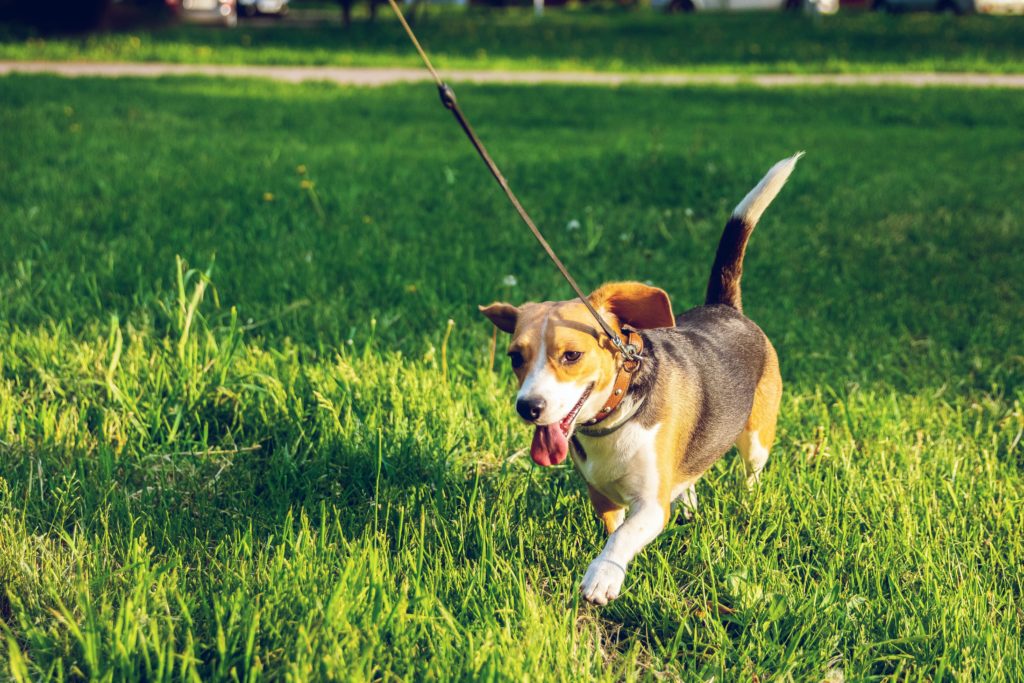
Walk Your Pet Month: Tips and Tricks
By Miguel Gonzalez, Behavior Programs Manager at Humane Society of the Pikes Peak Region Pueblo
It’s my favorite month of the year – Train Your Dog Month AND Walk Your Pet Month. It’s no surprise that these two go hand in hand. That’s why I decided to write a blog to commemorate this spectacular month – to ensure more people understand not only why you should walk your dog, but how to train your dog to be walked! Check out the Q&A below for some answers.
What is the best way to leash train your dog?
The best way to leash train your dog is in fact to start without a leash. There are several factors that play into having a good walking companion. First is considering if your dog is getting enough enrichment. If your walk is the only enrichment he is getting, he will likely have a lot of pent-up energy on the walk, making it hard to leash train him.
Once the enrichment aspect is addressed, it will be integral to start small. Start with a handful of treats. Walk out into the back yard, or even in the house, and call your dog to you and reward him when he comes back. Once the reward is given, walk away. If your dog follows, pop another treat in his mouth and repeat. Once this is working well, you want to increase the level of distraction present during training. So, change the environment or time of day in which you are practicing to help your dog generalize the behavior.
Once your dog is following along nicely in the chosen low-distraction environment, you can then add the leash. You will find it is way easier to keep your dog with you now. However, this will not account for the myriad of distractions that you will encounter as you walk around the neighborhood. That’s why it’s important to not only continue to reward your dog for staying next to you with some well-timed treats, but to also be rewarding good reactions to his name. When you say his name you should reward him for a positive response. In the long run, this will give us a chance to redirect or reposition our dog as needed.
After the leash has been added, and he is responding to his name during the walking process, you are ready for a short and sweet, low-distraction walk outside. Practice calling your dog to you, and practice calling his name, all while rewarding with lots of treats. As he gets better at this, you can extend the length of the walk or change up the location of the walk so he can generalize the behavior.
Remember – leash training takes time. It won’t be a perfect process. But stick with it! If you’re really struggling, we recommend seeking out a professional certified trainer for additional support.
Do you have any suggestions on products to use for strong leash pullers?
BLUE9 offers a product called Balance Harness, which features a front attachment that hinders the dog from pulling full force while in training. It is not meant to be a solution – only an aid to mitigate damage to you and your pup from pulling and decrease the reward your dog feels when pulling. You’ll also want to avoid any devices the cause pain or harm to your dog because he can begin to associate walks with negative feelings. This can result in leash reactivity, making him even harder to walk and causing emotional damage to your pet.
Why is it important to walk your dog?
Dogs are foragers by nature and thusly are enamored with exploration of their environment. That’s why walks are so important – they stimulate the dog’s mind and keep it active and healthy. They provide a natural outlet for dogs to let off steam and have positive experiences with the world around them. Walking your dog regularly helps to meet his physical and mental needs and prevents other maladaptive behaviors from developing. Imagine living your life waiting for 8-10 hours per day for your best friend to come home, and in that time you are just lounging around. When your best friend arrives, you’re going to want to have some fun! So, give your dog that fun and take him on a walk. The walk will serve as a great time for the two of you to bond as well!
Why is it important to keep your dog on a leash when walking him or her?
Dogs aren’t always as predictable as we’d like to give them credit for, and they can run off and easily get lost, hit by a car, or into an altercation with another dog or other type of animal. The best way to ensure your dog is safe is to keep him or her by your side with a leash. In addition, although we know our pets to be gentle and sweet, they are still animals of instinct and can respond differently to external stimuli, like other animals. One of the most common causes of dog bites found on our Bite Blotter is from off-leash dogs. That’s why it’s illegal to have your dog off-leash. So, keep your pup on a leash to ensure his or her safety and the safety of community pets!
Looking for additional info? Check out this video from our prior Behavior Programs Manager, Fernando!










